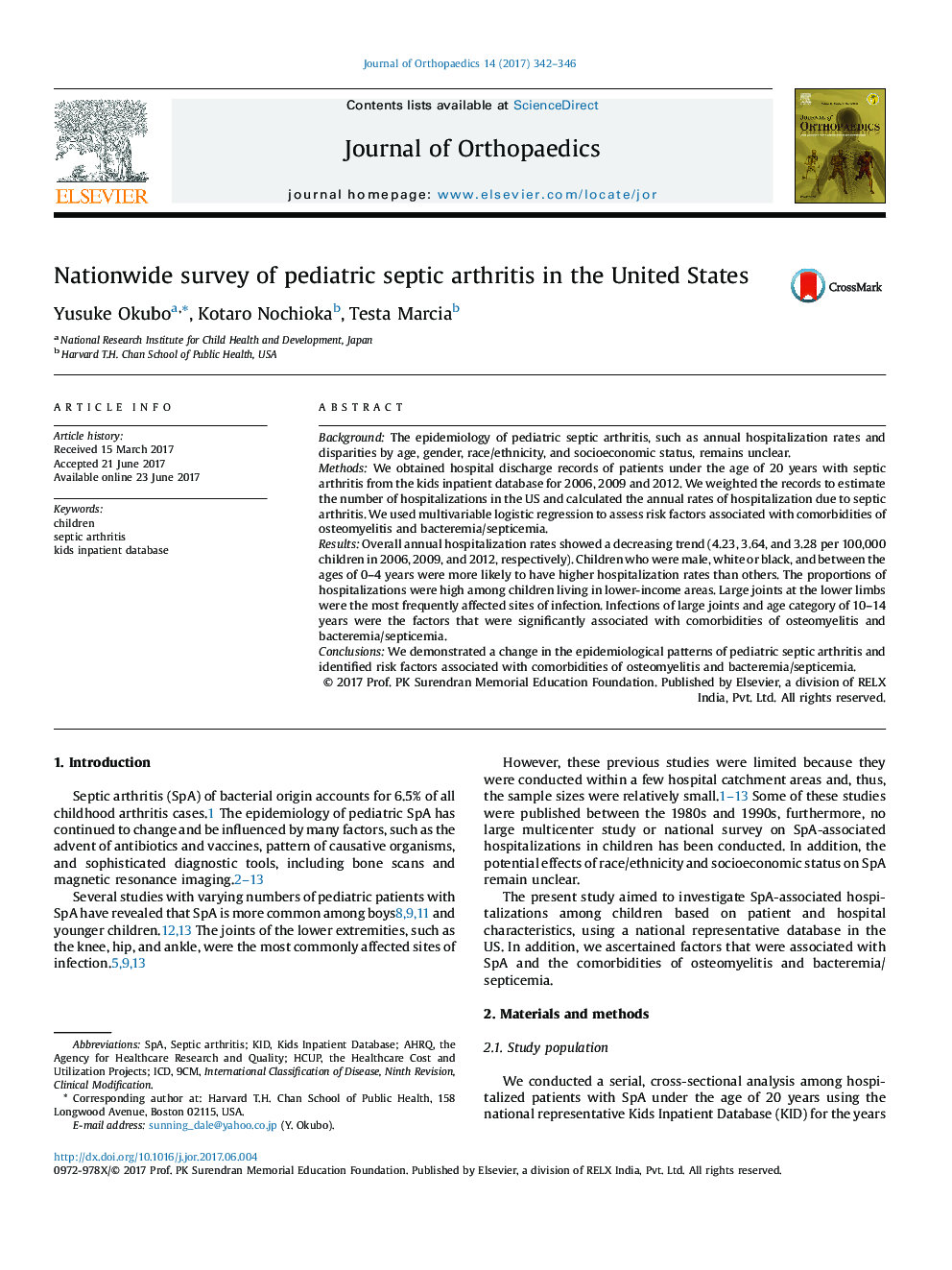| Article ID | Journal | Published Year | Pages | File Type |
|---|---|---|---|---|
| 5654129 | Journal of Orthopaedics | 2017 | 5 Pages |
BackgroundThe epidemiology of pediatric septic arthritis, such as annual hospitalization rates and disparities by age, gender, race/ethnicity, and socioeconomic status, remains unclear.MethodsWe obtained hospital discharge records of patients under the age of 20 years with septic arthritis from the kids inpatient database for 2006, 2009 and 2012. We weighted the records to estimate the number of hospitalizations in the US and calculated the annual rates of hospitalization due to septic arthritis. We used multivariable logistic regression to assess risk factors associated with comorbidities of osteomyelitis and bacteremia/septicemia.ResultsOverall annual hospitalization rates showed a decreasing trend (4.23, 3.64, and 3.28 per 100,000 children in 2006, 2009, and 2012, respectively). Children who were male, white or black, and between the ages of 0-4 years were more likely to have higher hospitalization rates than others. The proportions of hospitalizations were high among children living in lower-income areas. Large joints at the lower limbs were the most frequently affected sites of infection. Infections of large joints and age category of 10-14 years were the factors that were significantly associated with comorbidities of osteomyelitis and bacteremia/septicemia.ConclusionsWe demonstrated a change in the epidemiological patterns of pediatric septic arthritis and identified risk factors associated with comorbidities of osteomyelitis and bacteremia/septicemia.
